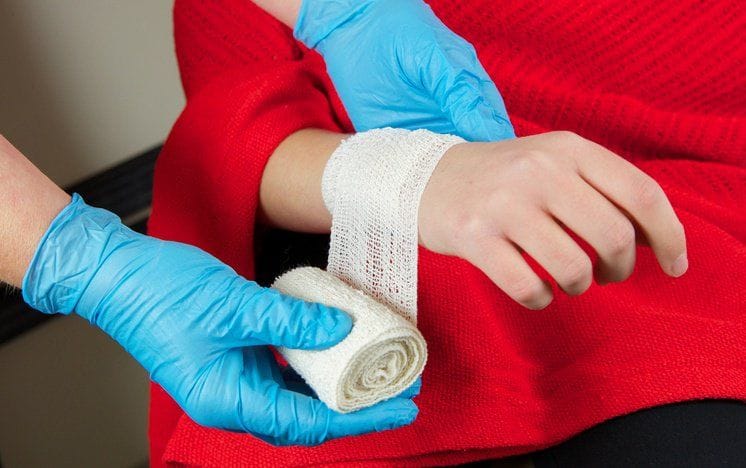
Wound care is a crucial aspect of patient management, and can impact a variety of factors, including the duration and extent of recovery. It can even determine whether a patient is readmitted to a hospital because of a more serious issue, such as a developing infection.
Addressing a wound and establishing the appropriate treatment is one of the most important stages in the Wound Prevention and Management Cycle, and can help decrease the risk of an infection or complication as the wound heals. Read on for a helpful guide on the techniques and applications paramedics can use to help quickly and safely address patient injuries.
Classify the Wound First
Immediately after someone is wounded or injured, it is important to carefully assess the level of damage. Identifying and categorizing the wound helps paramedics to determine and apply the appropriate treatment quickly and at minimized risk to the patient.
Open wounds can include superficial skin damage as well as more serious injuries such as incisions, lacerations, and punctures. Incisions can be treated depending on the size and depth of the wound. Lacerations, which are irregular wounds caused by tearing, can produce underlying tissue damage, and may require more serious treatments like stitches. Punctures are perhaps the most serious open wound, and can cause underlying tissue damage that can lead to infection. These injuries should be treated immediately.

The effect of the bandaging depends on the type of wound
Closed wounds such as contusions or crushing injuries often involve blunt-force trauma, and don’t have outward signs of damage. These can be hard to diagnose because they are internal, but generally require compression when being treated.
It’s also important in primary care paramedic courses to be aware of how much time has passed between the initial infliction of the wound and treatment. A relatively new wound that also has a high amount of debris or tissue should be considered more serious than one without due to the risk of infection.
Choose the Right Type of Bandage or Dressing
Outwardly, it may appear as if bandage and dressing are used interchangeably. However, a standard paramedic course teaches students that a dressing refers to the primary layer of material in direct contact with the wound, while a bandage is used more often to keep dressings in place, apply pressure to control bleeding, or support a strained muscle.

The nature of the wound should determine which bandage is used
Bandages come in three general categories: roller, tubular, and triangular. Roller bandages can be used with both open and closed wounds, while tubular bandages are most often used on fingers and toes because they are difficult to bandage with gauze. Triangular bandages can be opened up to form a sling as well as become a cold compress to help reduce swelling.
Utilize Wrapping Techniques from Your Paramedic Course
When applying a bandage or dressing to a wound, it’s important to consider how exactly the bandage will be applied, because some areas of the body are more difficult to dress than others. Layering is an important aspect of bandaging a wound, and should be done first to cover the afflicted area, then to secure the contact layer, and finally to keep the wrappings in place as a whole.
Be sure to include an anchor wrap across the area which will be bandaged, as this will provide a measure of stability to the dressing. Wrap in a circular pattern to cover small areas, a spiral pattern for cylindrical areas such as the arms, calves, or thighs, and a figure-eight wrap to support or limit movement at the joints. The wrap pattern is determined by the area and nature of the injury, and can change depending on severity.
Are you interested in a primary care paramedic program?
Contact Oxford College for more information today!






